Brother T77H228 USB Wi-Fi Module User Manual T77H228 00
Brother Industries, Ltd. USB Wi-Fi Module T77H228 00
Brother >
User Manual
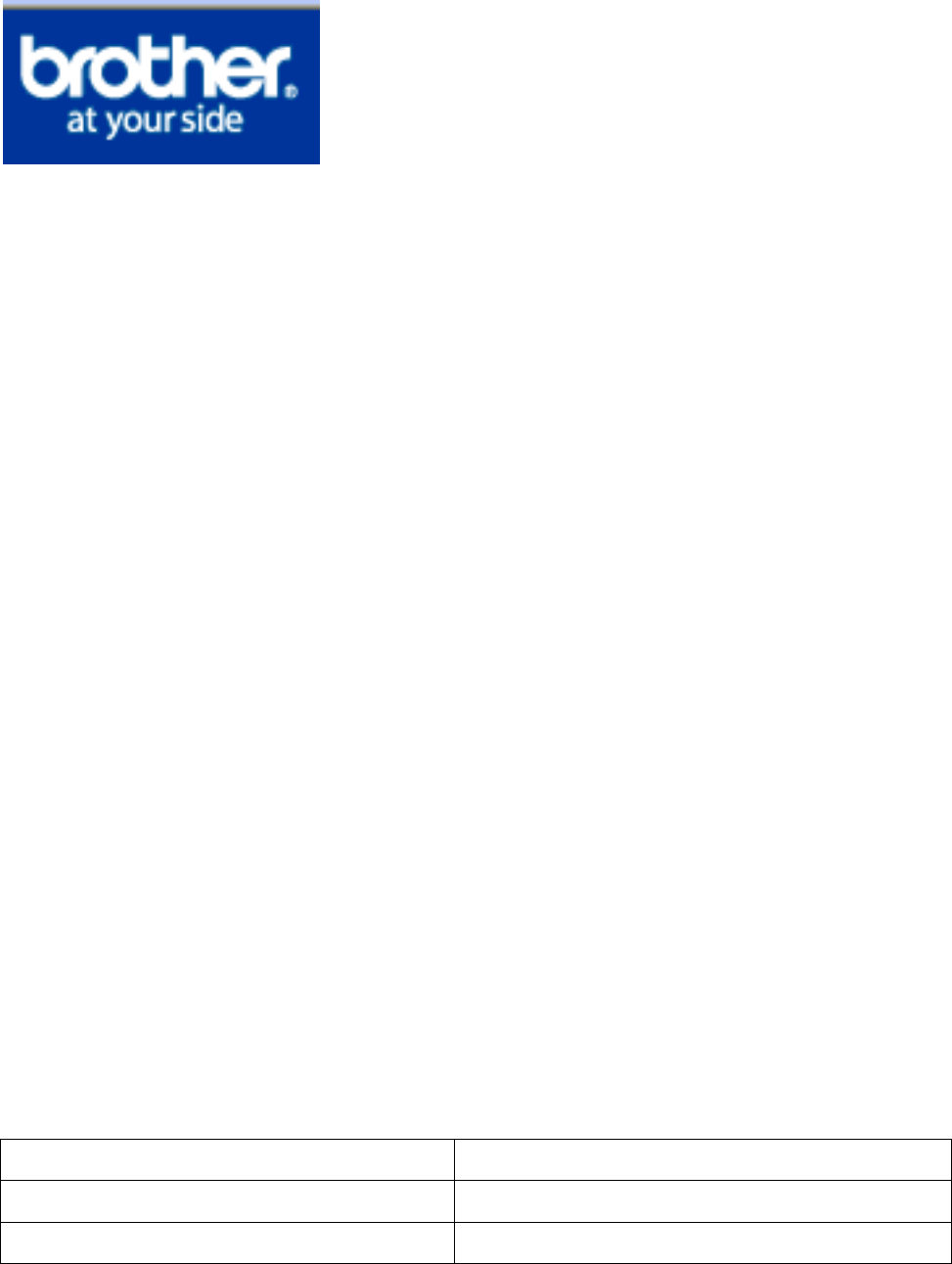
T77H228 USB Wi-Fi Module
USER MANUAL
Project Name USB Wi-Fi Module
Revision 00
Foxconn project code T77H228
Content
1. INTRODUCTION .......................................................................................................... 3
2. WIFI ALLIANCE CONFORMANCE ............................................................................. 4
3. HARDWARE SPECIFICATION.................................................................................... 5
4. PRODUCT REQUIREMENTS ...................................................................................... 5
5. INTERFACE OF CONNECTOR ................................................................................... 6
6. NOTICE........................................................................................................................ 7
1. Introduction
The T77H228.00 802.11b/g/n module provides wireless modem functionality utilizing direct
sequence spread spectrum and OFDM/CCK technology. This module is based on
Broadcom BCM4319GKUBG P20 solution which is with integrated 2.4GHz IEEE802.11
b/g/n (MAC/baseband/radio), power amplifiers (PA), and power management unit (PMU).
1.1 Scope
The wireless LAN is compliant to IEEE 802.11b and IEEE 802.11g and IEEE 802.11n
standard. The data rate of 802.11b is up to 11Mbps and fallback rates of 5.5, 2, 1Mbps.
The data rate of 802.11g is up to 54Mbps and fallback rates of 48,36,24,18,12,9, 6Mbps.
The data rate of 802.11n is up to 65Mbps and fallback rates of 6.5, 13, 19.5, 26, 39, 52,
58.5, 65Mbps for HT20. And also provide 13.5, 27, 40.5, 54, 81, 108, 121.5, 135Mbps for
HT40.
1.2 Function
• RoHS and Green Compliant.
• 1X1 IEEE802.11b/g/n based on Broadcom 4319 solution.
• USB 2.0 Interface, High and Full Speeds supported.
• Module is powered by the host with a 3.3V +/- 10% supply.
• Two on-board PCB antennas.
• DPDT switch for antenna diversity.
2. WIFI ALLIANCE CONFORMANCE
The Module is certified by the Wi-Fi Alliance. The Module and standard PC driver passes
the Wi-Fi System Interoperability Test Plan including the following:
A. IEEE 802.11-2007 Standard for LAN/MAN
Specific requirements Part 11: Wireless LAN Medium Access Control (MAC) and
Physical Layer (PHY) Specifications
B. IEEE P802.11n-2009 Standard for Information Technology
Telecommunications and information exchange between systems - Local and
metropolitan area networks – Specific requirements - Part 11: Wireless LAN
Medium Access Control (MAC) and Physical Layer (PHY) Specifications
Amendment 5: Enhancements for Higher Throughput
C. Supported security:
• WPATM and WPA2TM (Personal) support for powerful encryption and authentication
• AES and TKIP acceleration hardware for faster data encryption
• Secure Easy setup for simple Wi-Fi setup and WPA2/WPA security configuration
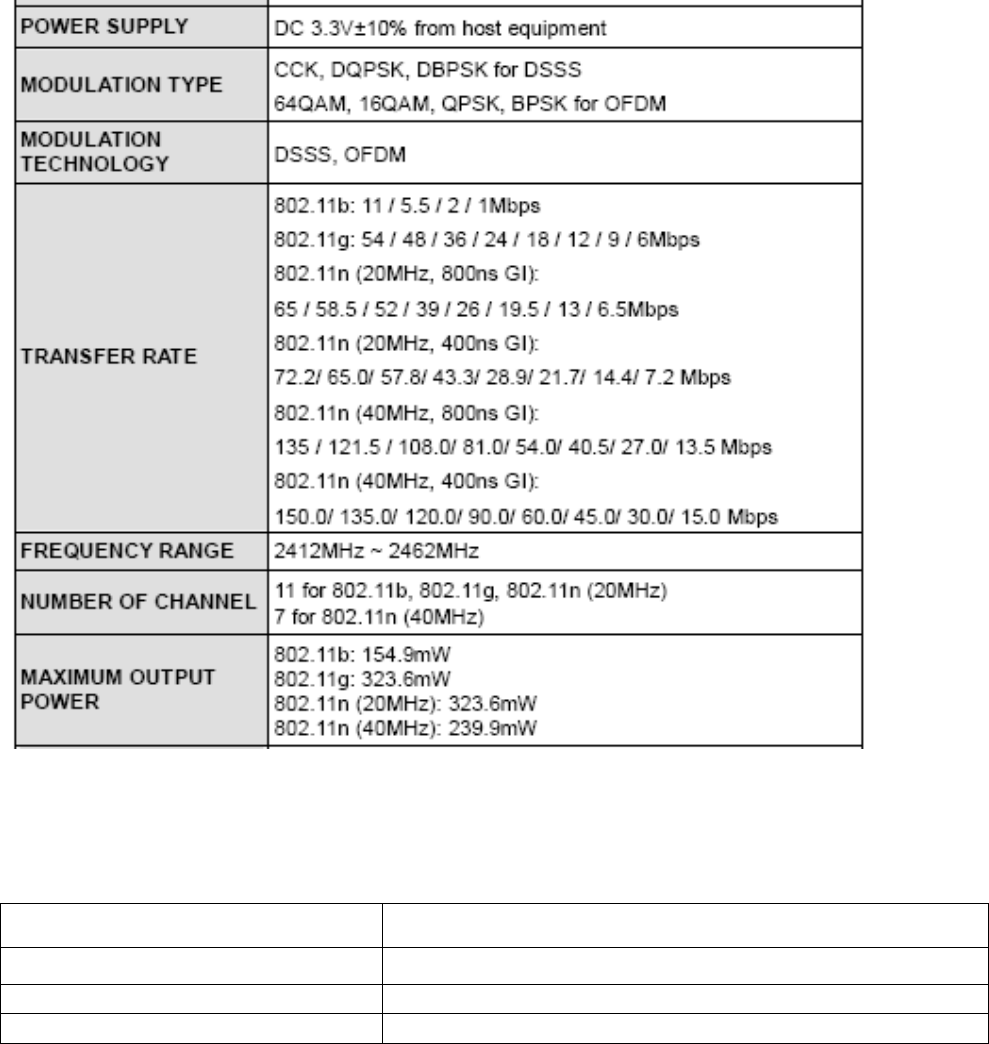
3. Hardware Specification
4. Product Requirements
4.1 Hardware Requirements
Form factor 30 mm x30mm module with 6-pin W.T.B connector
Host Interface USB2.0 interface
PCB 4-layer design
Antenna connector RF switch connector
4.2 Hardware Architecture
The T77H228 802.11b/g/n module is based on Broadcom BCM4319 solution which is with
integrated 2.4GHz IEEE802.11 b/g/n (MAC/baseband/radio), power amplifiers (PA), and
power management unit (PMU).This module is powered from the host (3.3V) and
interfaces to the host with USB 2.0 signals and with two on-board antennas for diversity
and one on-board 30 MHz XTAL.
The functional block diagram is shown as below.
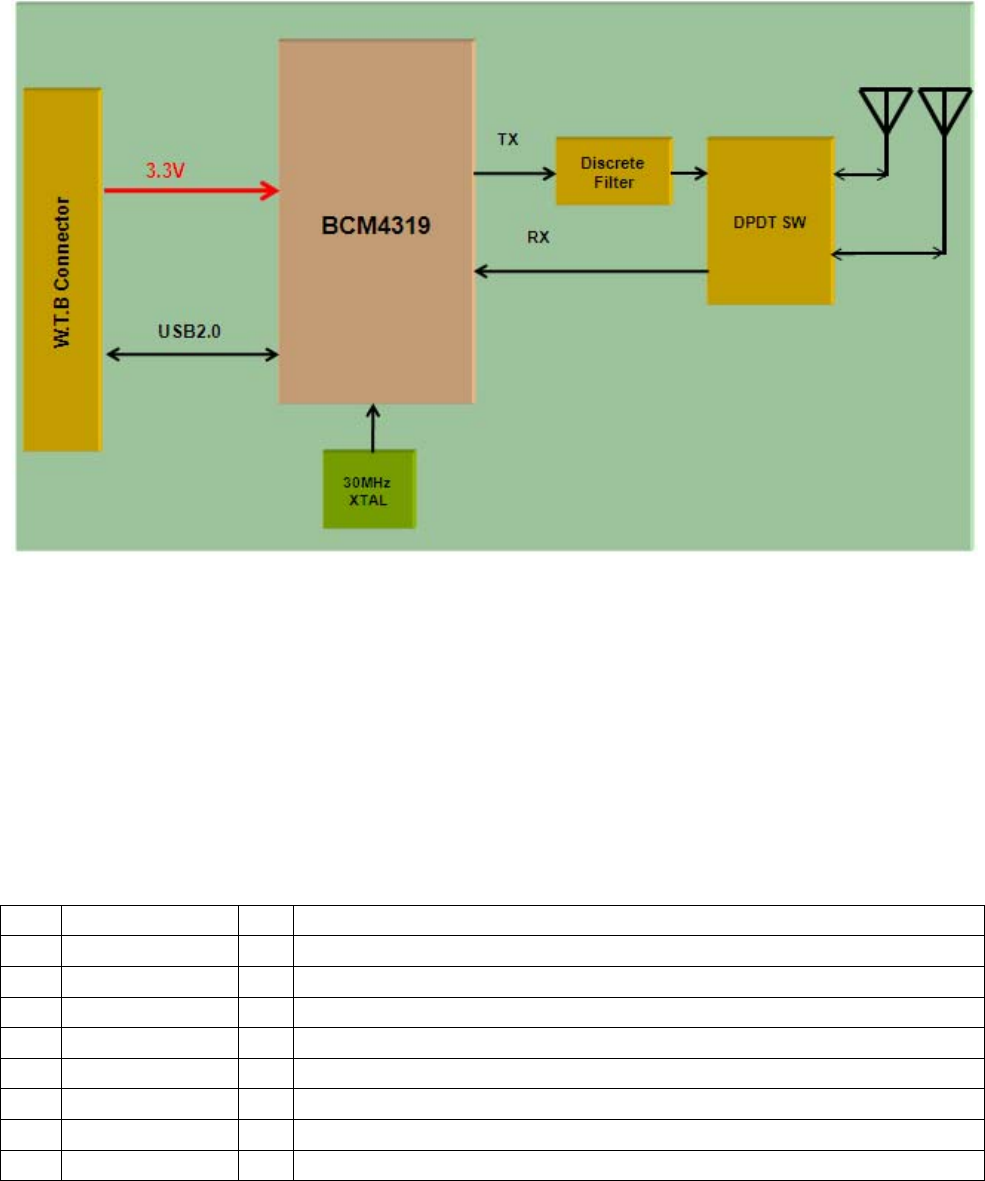
5. Interface of connector
Manufacturer Part number: S6B-PH-SM4-TB (LF) (SN)
Pin Pin Name I/O Note
1 WL_REG_ON I Used by PMU to enable/disable power the internal regulators.
2 VDD3_3V USB power supply
3 DP I/O USB port data plus
4 DN I/O USB port data minus
5 GND
6 GND
S1 GND
S2 GND
6. Windows XP Wireless Utility and install
Remark: The module is for printer, it is used in the Linux OS, so this Windows driver is just
for reference. To install the USB driver files, complete below steps:
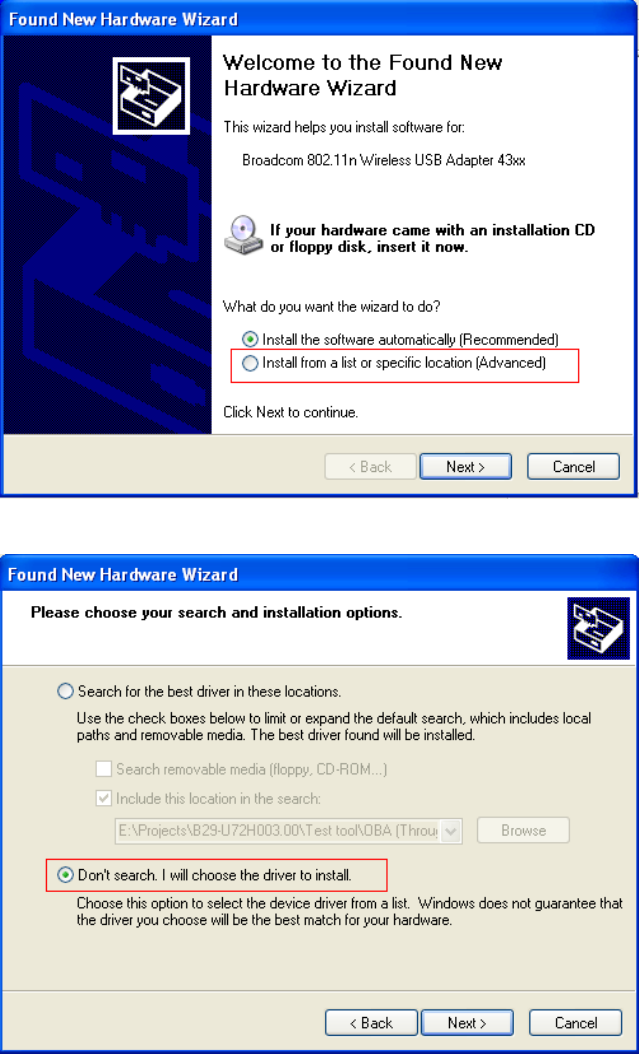
1, copy the USB driver files and save them to a directory on a local PC running windows
XP.
2, Connect the device under test to a USB port on the local PC.
Windows launches the found new hardware wizard.
3, choose install from a list or specific location (advanced), and then click next.
4, choose Don’t search, I will choose the driver to install, and then click Next.
5, Browse to the directory where the driver files are stored, and then click ok.
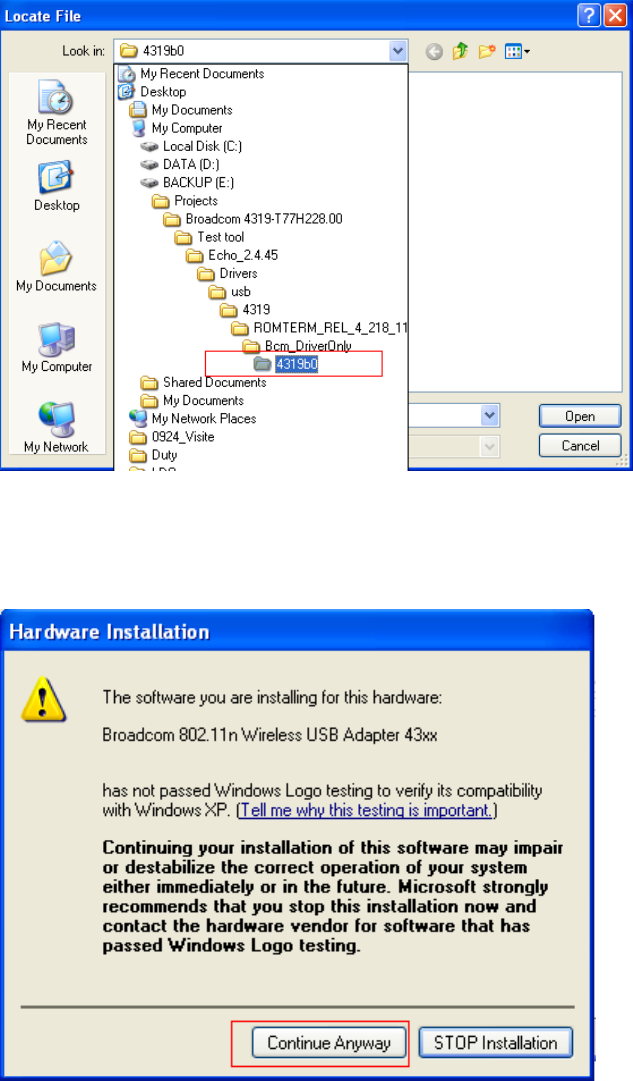
6, in the hardware installation confirmation window that appears clicks continue Anyway
to continue the installation process.
7, when the driver installation process completes successfully, click Finish to close the
wizard.
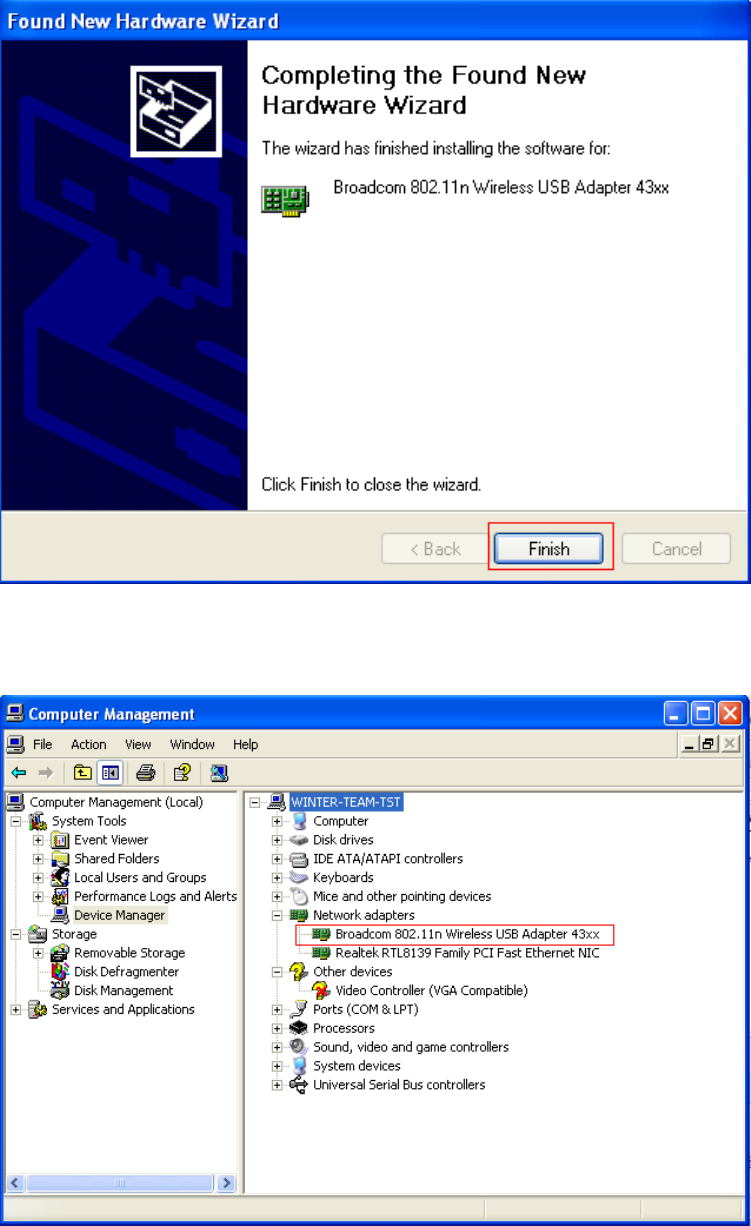
8, under Network adapters in Device Manager, make sure Broadcom 802.11n wireless
USB adapter 43xx is listed.
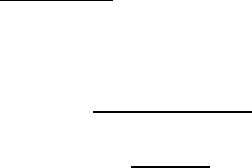
FCC Notice :
Federal Communication Commission Interference Statement
This equipment has been tested and found to comply with the limits for a Class B
digital device, pursuant to Part 15 of the FCC Rules. These limits are designed to
provide reasonable protection against harmful interference in a residential installation.
This equipment generates, uses and can radiate radio frequency energy and, if not
installed and used in accordance with the instructions, may cause harmful interference
to radio communications. However, there is no guarantee that interference will not
occur in a particular installation. If this equipment does cause harmful interference to
radio or television reception, which can be determined by turning the equipment off
and on, the user is encouraged to try to correct the interference by one of the following
measures:
- Reorient or relocate the receiving antenna.
- Increase the separation between the equipment and receiver.
- Connect the equipment into an outlet on a circuit different from that
to which the receiver is connected.
- Consult the dealer or an experienced radio/TV technician for help.
FCC Caution: Any changes or modifications not expressly approved by the party
responsible for compliance could void the user's authority to operate this equipment.
This device complies with Part 15 of the FCC Rules. Operation is subject to the
following two conditions: (1) This device may not cause harmful interference, and (2)
this device must accept any interference received, including interference that may
cause undesired operation.
IMPORTANT NOTE:
FCC Radiation Exposure Statement:
This equipment complies with FCC radiation exposure limits set forth for an
uncontrolled environment. This equipment should be installed and operated with
minimum distance 20cm between the radiator & your body.
This transmitter must not be co-located or operating in conjunction with any other
antenna or transmitter.
This device is intended only for OEM integrators under the following conditions:
1) The antenna must be installed such that 20 cm is maintained between the
antenna and users, and
2) The transmitter module may not be co-located with any other transmitter or
antenna,
3) For all products market in US, OEM has to limit the operation channels in CH1 to
CH11 for 2.4G band by supplied firmware programming tool. OEM shall not
supply any tool or info to the end-user regarding to Regulatory Domain change.
As long as 3 conditions above are met, further transmitter test will not be required.
However, the OEM integrator is still responsible for testing their end-product for any
additional compliance requirements required with this module installed
IMPORTANT NOTE: In the event that these conditions can not be met (for example
certain laptop configurations or co-location with another transmitter), then the FCC
authorization is no longer considered valid and the FCC ID can not be used on the
final product. In these circumstances, the OEM integrator will be responsible for re-
evaluating the end product (including the transmitter) and obtaining a separate FCC

authorization.
IMPORTANT NOTE: In the event that these conditions can not be met (for example
certain laptop configurations or co-location with another transmitter), then the FCC
authorization is no longer considered valid and the FCC ID can not be used on the
final product. In these circumstances, the OEM integrator will be responsible for re-
evaluating the end product (including the transmitter) and obtaining a separate FCC
authorization.
End Product Labeling
This transmitter module is authorized only for use in device where the antenna may be
installed such that 20 cm may be maintained between the antenna and users. The
final end product must be labeled in a visible area with the following: “Contains FCC
ID: B3QT77H228”.
Manual Information To the End User
The OEM integrator has to be aware not to provide information to the end user
regarding how to install or remove this RF module in the user’s manual of the end
product which integrates this module.
The end user manual shall include all required regulatory information/warning as show
in this manual.
Industry Canada statement:
This device complies with RSS-210 of the Industry Canada Rules. Operation is subject to
the following two conditions: (1) This device may not cause harmful interference, and (2)
this device must accept any interference received, including interference that may cause
undesired operation.
Ce dispositif est conforme à la norme CNR-210 d'Industrie Canada applicable aux
appareils radio exempts de licence. Son fonctionnement est sujet aux deux conditions
suivantes: (1) le dispositif ne doit pas produire de brouillage préjudiciable, et (2) ce
dispositif doit accepter tout brouillage reçu, y compris un brouillage susceptible de
provoquer un fonctionnement indésirable.
=========================================================
IMPORTANT NOTE: (For mobile device use)
Radiation Exposure Statement:
This equipment complies with IC radiation exposure limits set forth for an uncontrolled
environment. This equipment should be installed and operated with minimum distance
20cm between the radiator & your body.
NOTE IMPORTANTE: (Pour l'utilisation de dispositifs mobiles)
Déclaration d'exposition aux radiations:
Cet équipement est conforme aux limites d'exposition aux rayonnements IC établies pour
un environnement non contrôlé. Cet équipement doit être installé et utilisé avec un
minimum de 20 cm de distance entre la source de rayonnement et votre corps.
This device is intended only for OEM integrators under the following conditions: (For module device
use)
1) The antenna must be installed such that 20 cm is maintained between the antenna and
users, and
2) The transmitter module may not be co-located with any other transmitter or antenna,
3) For all products market in Canada, OEM has to limit the operation channels in CH1 to
CH11 for 2.4G band by supplied firmware programming tool. OEM shall not supply any tool
or info to the end-user regarding to Regulatory Domain change.
As long as 3 conditions above are met, further transmitter test will not be required.
However, the OEM integrator is still responsible for testing their end-product for any
additional compliance requirements required with this module installed.
Under Industry Canada regulations, this radio transmitter may only operate using an
antenna of a type and maximum (or lesser) gain approved for the transmitter by Industry
Canada. To reduce potential radio interference to other users, the antenna type and its
gain should be so chosen that the equivalent isotropically radiated power (e.i.r.p.) is not
more than that necessary for successful communication.
Cet appareil est conçu uniquement pour les intégrateurs OEM dans les conditions
suivantes: (Pour utilisation de dispositif module)
1) L'antenne doit être installée de telle sorte qu'une distance de 20 cm est respectée entre
l'antenne et les utilisateurs, et
2) Le module émetteur peut ne pas être coïmplanté avec un autre émetteur ou antenne,
3) Pour tous les produits vendus au Canada, OEM doit limiter les fréquences de
fonctionnement CH1 à CH11 pour bandes de fréquences 2.4G grâce aux outils de
microprogrammation fournis. OEM ne doit pas fournir d'outil ou d'informations à l'utilisateur
final en ce qui concerne le changement de réglementation de domaine.
Tant que les 3 conditions ci-dessus sont remplies, des essais supplémentaires sur
l'émetteur ne seront pas nécessaires. Toutefois, l'intégrateur OEM est toujours
responsable des essais sur son produit final pour toutes exigences de conformité
supplémentaires requis pour ce module installé.
Conformement a la reglementation d'Industrie Canada, le present emetteur radio peut
fonctionner avec une antenne d'un type et d'un gain maximal (ou inferieur) approuve pour
l'emetteur par Industrie Canada. Dans le but de reduire les risques de brouillage
radioelectrique a l'intention des autres utilisateurs, il faut choisir le type d'antenne et son
gain de sorte que la puissance isotrope rayonnee equivalente (p.i.r.e.) ne depasse pas
l'intensite necessaire a l'etablissement d'une communication satisfaisante.
=========================================================

IMPORTANT NOTE:
In the event that these conditions can not be met (for example certain laptop
configurations or co-location with another transmitter), then the Canada authorization is
no longer considered valid and the IC ID can not be used on the final product. In these
circumstances, the OEM integrator will be responsible for re-evaluating the end product
(including the transmitter) and obtaining a separate Canada authorization.
NOTE IMPORTANTE:
Dans le cas où ces conditions ne peuvent être satisfaites (par exemple pour certaines
configurations d'ordinateur portable ou de certaines co-localisation avec un autre
émetteur), l'autorisation du Canada n'est plus considéré comme valide et l'ID IC ne
peut pas être utilisé sur le produit final. Dans ces circonstances, l'intégrateur OEM sera
chargé de réévaluer le produit final (y compris l'émetteur) et l'obtention d'une
autorisation distincte au Canada.
=========================================================
End Product Labeling
This transmitter module is authorized only for use in device where the antenna may be
installed such that 20 cm may be maintained between the antenna and users. The final
end product must be labeled in a visible area with the following: “Contains IC: 1112C-
T77H228”.
Plaque signalétique du produit final
Ce module émetteur est autorisé uniquement pour une utilisation dans un dispositif où
l'antenne peut être installée de telle sorte qu'une distance de 20cm peut être maintenue
entre l'antenne et les utilisateurs. Le produit final doit être étiqueté dans un endroit
visible avec l'inscription suivante: "Contient des IC: 1112C-T77H228".
=========================================================
Manual Information To the End User
The OEM integrator has to be aware not to provide information to the end user

regarding how to install or remove this RF module in the user’s manual of the end
product which integrates this module.
The end user manual shall include all required regulatory information/warning as show
in this manual.
Manuel d'information à l'utilisateur final
L'intégrateur OEM doit être conscient de ne pas fournir des informations à l'utilisateur final
quant à la façon d'installer ou de supprimer ce module RF dans le manuel de l'utilisateur
du produit final qui intègre ce module.
Le manuel de l'utilisateur final doit inclure toutes les informations réglementaires requises
et avertissements comme indiqué dans ce manuel.
For Taiwan 警語:
經型式認證合格之低功率射頻電機,非經許可,公司、商號或使用者均不得擅自變更頻
率、加大功率或變更原設計之特性及功能。
低功率射頻電機之使用不得影響飛航安全及干擾合法通信;經發現有干擾現象時,應立
即停用,並改善至無干擾時方得繼續使用。前項合法通信,指依電信法規定作業之無線
電通信。低功率射頻電機須忍受合法通信或工業、科學及醫療用電波輻射性電機設備之
干擾。
Note: 1. 本模組於取得認證後將依規定於模組本體標示審驗合格標籤 2. 系統廠商應於平台
上標示「本產品內含射頻模組: XXXyyyLPDzzzz-x (NCC ID) 」字樣